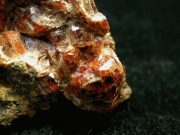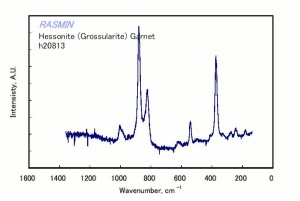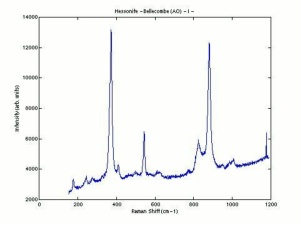Difference between revisions of "Hessonite"
Jump to navigation
Jump to search
m (Text replace - "== Authority ==" to "== Sources Checked for Data in Record ==") |
|||
| Line 3: | Line 3: | ||
A golden brown to red color [[gemstone]] composed of [[grossular]] (calcium aluminum garnet) which has a small portion of [[iron]]. Hessonite resembles yellow [[zircon]] in color and both were called hyacinth in ancient times because they were found in the same gem-bearing gravels of Ceylon. Hessonite is softer than [[quartz]] and less brittle than zircon and hence, was used in ancient engraved gems (Ogden 1982). | A golden brown to red color [[gemstone]] composed of [[grossular]] (calcium aluminum garnet) which has a small portion of [[iron]]. Hessonite resembles yellow [[zircon]] in color and both were called hyacinth in ancient times because they were found in the same gem-bearing gravels of Ceylon. Hessonite is softer than [[quartz]] and less brittle than zircon and hence, was used in ancient engraved gems (Ogden 1982). | ||
| + | [[[SliderGallery rightalign|HessonitegrossgarnetRS.jpg~Raman|Hessoniteitaly1.jpg~Raman]]] | ||
== Synonyms and Related Terms == | == Synonyms and Related Terms == | ||
grossularite; cinnamon stone; essonite; mormoriom; hessenite; esonita (Esp.); Hessonit (Deut.) | grossularite; cinnamon stone; essonite; mormoriom; hessenite; esonita (Esp.); Hessonit (Deut.) | ||
| − | + | ==Physical and Chemical Properties== | |
{| class="wikitable" | {| class="wikitable" | ||
|- | |- | ||
| Line 14: | Line 15: | ||
|- | |- | ||
! scope="row"| Density | ! scope="row"| Density | ||
| − | | 3.64-3.69 | + | | 3.64-3.69 g/ml |
|} | |} | ||
| − | |||
| − | |||
| − | |||
| − | |||
| − | |||
| − | |||
== Comparisons == | == Comparisons == | ||
| Line 27: | Line 22: | ||
[[media:download_file_415.pdf|Properties of Common Gemstones]] | [[media:download_file_415.pdf|Properties of Common Gemstones]] | ||
| − | + | ==Resources and Citations== | |
| − | |||
| − | == | ||
* Jack Odgen, ''Jewellery of the Ancient World'', Rizzoli International Publications Inc., New York City, 1982 | * Jack Odgen, ''Jewellery of the Ancient World'', Rizzoli International Publications Inc., New York City, 1982 | ||
| Line 37: | Line 30: | ||
* ''The American Heritage Dictionary'' or ''Encarta'', via Microsoft Bookshelf 98, Microsoft Corp., 1998 | * ''The American Heritage Dictionary'' or ''Encarta'', via Microsoft Bookshelf 98, Microsoft Corp., 1998 | ||
| − | * Wikipedia | + | * Wikipedia: http://en.wikipedia.org/wiki/Hessonite (Accessed Sept. 7, 2005) |
[[Category:Materials database]] | [[Category:Materials database]] | ||
Revision as of 07:50, 9 August 2022
Description
A golden brown to red color Gemstone composed of Grossular (calcium aluminum garnet) which has a small portion of Iron. Hessonite resembles yellow Zircon in color and both were called hyacinth in ancient times because they were found in the same gem-bearing gravels of Ceylon. Hessonite is softer than Quartz and less brittle than zircon and hence, was used in ancient engraved gems (Ogden 1982).
Synonyms and Related Terms
grossularite; cinnamon stone; essonite; mormoriom; hessenite; esonita (Esp.); Hessonit (Deut.)
Physical and Chemical Properties
| Mohs Hardness | 7 |
|---|---|
| Density | 3.64-3.69 g/ml |
Comparisons
Properties of Common Gemstones
Resources and Citations
- Jack Odgen, Jewellery of the Ancient World, Rizzoli International Publications Inc., New York City, 1982
- Random House, Webster's Encyclopedic Unabridged Dictionary of the English Language, Grammercy Book, New York, 1997
- The American Heritage Dictionary or Encarta, via Microsoft Bookshelf 98, Microsoft Corp., 1998
- Wikipedia: http://en.wikipedia.org/wiki/Hessonite (Accessed Sept. 7, 2005)


